6. Limelight (1952) – Charles Chaplin
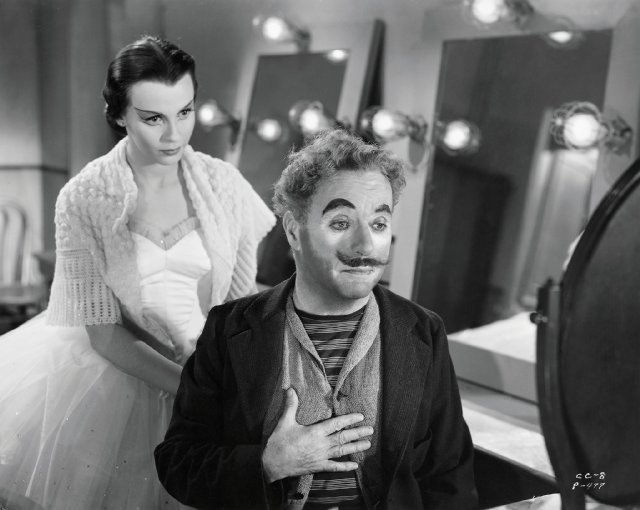
If anyone ever needs to be shown just how fickle fame and the adoration of the public can be, the career of Charles “Charlie” Chaplin is a perfect case in point. Who was more beloved than “The Little Tramp” in the early years of cinematic history, from the late 1900s up through 1940 when he made his way belated and triumphant talkie debut with the all around hit The Great Dictator.
Alas, that effort, good as it was, might have been a hit more out of curiosity to finally hear Chaplin than anything else. Admittedly thereafter, concerns such as the coming war and the state of the world, along with a raft of really unpleasant personal troubles, kept him off screen until 1947’s Monsieur Verdoux, an infamous flop in all departments at the time (a classic now, of course).
Chaplin didn’t film again until 1952, when even more unhappy personal news overshadowed the effort. When Chaplin decided to relax by taking his large family to Europe on vacation, the U.S State Department, wary of left-leaning figures such as Chaplin, announced that the possibility of the U.S. resident, but pointedly not citizen, being allowed to return would have to weighed to see if he would be allowed back in the country.
Chaplin didn’t even fight it. He bought a new home in Switzerland, had his U.S property sold, and, except for a brief visit to accept an honorary Oscar in 1972, was done with the country. This was so sad and, even worse, the film Chaplin had just shot (and the next one five years later) were swallowed up in the vortex of the unhappy situation.
Limelight might have been a tough sell in any event. After nearly half a century of making people life, Chaplin decided to go dramatic! There had been dramatic undercurrents in the two earlier talkies which he had made but this one was pure drama with a few lighter moments.
The story, set in London just before World War I, sees a pretty, young would be ballerina (a luminous Claire Bloom in her first major role), despairing of ever having career success, and tiying to kill herself in her seedy boarding house room by turning on the gas. She is saved by her previously unacquainted neighbor, Calvero (Chaplin). Calvero had once been a great comedy star on the music hall circuit, but now he’s a washed up has-been, largely drinking to fill his time.
After the clown saves the ballerina, he does his best to cheer her and, as he begins to develop a love for her, he starts to feel alive again. Sadly, there are too many years between them, though she starts to love him in return, and the only certainty is that he must fade away as she comes into her own.
This film disturbed many who saw, and have seen, it over the years since its quite obvious that Chaplin was working through a great many personal issues dramatically. Given the decade preceding the film’s making, his identification with Calvero is all too clear (and sad). Also, during that time he had made a most happy fourth and final marriage-to a woman about as many years his junior as the ballerina is Calvero’s (and who looked very much like Miss Bloom), but one which some looked at with scepticism.
Also, though Chaplin would never publically admit that his time was over, the film makes it plain that he knew that the best years were behind him. It doesn’t help that Chaplin still had a healthy ego and wasn’t quite as generous to Bloom and the other players as he might have been, taking up quite lot of footage and having all the other characters praise and celebrate his. (One real quirk is that he cast his son Sidney, who was the image of his father, as the young woman’s ultimately successful younger suitor. It looks for all the world as if she’s choosing between versions of the same man at different ages.)
However, all this being stated, the acting is quite good. This set Bloom off on a fine career and Chaplin gives an extraordinary performance (and its a pity that he didn’t end his career here instead of making his final bow in 1957’s flat and bitter A King in New York). Also, though the film is a bit too long (137 min.) and way too sentimental and a bit maudlin, it is also quite touching, particularly the finale.
There was an odd appendix as well: a film must play in Los Angeles to qualify for an Academy Award. Due to the unpleasantness, Limelight didn’t make it until 1973. At that time it was not the stellar performances or direction or writing which got noticed but the score, which won Chaplin his only competitive Oscar.
7. Wild River (1960) – Elia Kazan
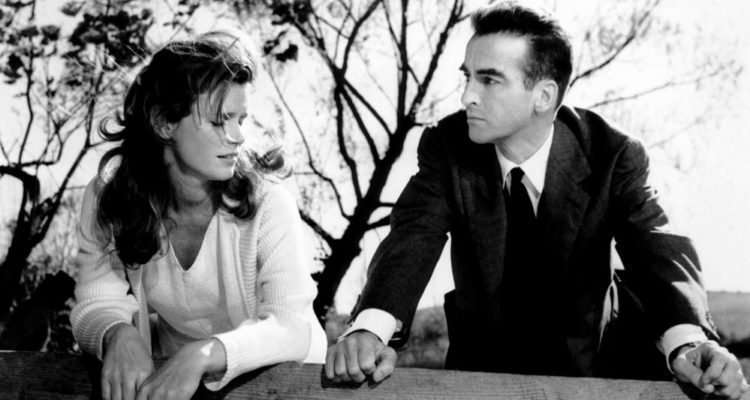
To very many, stage and film director Elia Kazan was one of the seminal dramatic forces in the new ‘Method” theatre and film which excreted so much influence from the mid-Twentieth Century on.
When he was really on fire in such projects as theatre and film (1951) versions of A Streetcar Named Desire, East of Eden (1955) and Splendor in the Grass (1961), he had both the critical world and the public at his feet. No one can be expected to have that kind of success every time and he didn’t. Some films such as 1957’s A Face in the Crowd, flopped at the time, only to find an audience later. Sadly, one of his best never did (to date anyway).
In 1960, not having a film hit since 1956’s Baby Doll, he started work on what would turn out to be his last film for his longtime studio, Twentieth Century Fox. He had two similar and both rather undistinguished books adapted into a script about conflict engendered by the life-saving dams built by the Tennessee Valley Authority during the years of the Great Depression in the 1930s.
The central plot would have an urban northern official from the TVA coming to a most rural and culturally backward part of Tennessee to oversee dam construction but, mainly, to remove the one remaining large obstacle: an iron willed matriarch who has no intention of vacating her long time home on a tiny island off the shore of the nearest town, which must be flooded for the project to move forward.
In another kind of film the young man would come around to the side of the lovably cranky old sourpuss, especially after falling in love with her young and widowed granddaughter, and save her home (regardless of the lives the dam will save and job it will create for the needy populace).
This is surely not that film. Though the young man (a post-accident Montgomery Clift, not looking so young but giving a good performance) admits to admiring the fortitude of the older woman (Jo Van Fleet, an Oscar winner for East of Eden, again convincingly aged far beyond her own years), he knows that what she stands for is wrong.
In that same other kind of film, the woman’s granddaughter would be a sexy little thing who would help to win the man over to grandma’s side of things. In this one the sadly lovely woman (Lee Remick, who had started her fine career in A Face in the Crowd) sees quite plainly that her grandmother’s willfulness is limiting the lives and stealing the futures of many, including herself and her young children and, thus, she strikes off on her own course (also involving the man, as it happens).
This kind of thoughtful drama is definitely a hard sell and the public didn’t bite. This was partly facilitated by the fact that, though there is a a happy outcome for some of the characters, there is an air of sadness hanging over the film since even that happiness must be paid for in dear human cost. However, everything about the film, writing, acting, direction is excellent.
The supporting cast features such stalwarts as Albert Salmi, Jay C. Flippen, Kazan’s then-future wife, Barbara Loden, and a debuting Bruce Dern. Clift was going through a bad time and gave some erratic performances around this time but he does well here and matches up nicely with Remick. However, Van Fleet steals the show in a difficult role (not a villainess but not quite sympathetic). Also, a major assest is the rick evocation of 1930’s Tennessee.
The film was actually shot on authentic locations, which doesn’t often happen, due to the fact that little had changed in that section of the country in the three decades between the plot’s time setting and the film’s production.
One really unhappy element of Wild River’s history is not just that it flopped at the box office but that Fox threw it into their vaults and virtually never took it out until the video era and renewed interest in film (and Kazan’s) history brought it out (and, even then, it took a good while for that to happen). More happily, this film is now easily accessible and deserves another chance.
8. The Ballad of Cable Hogue (1970) – Sam Peckinpaugh
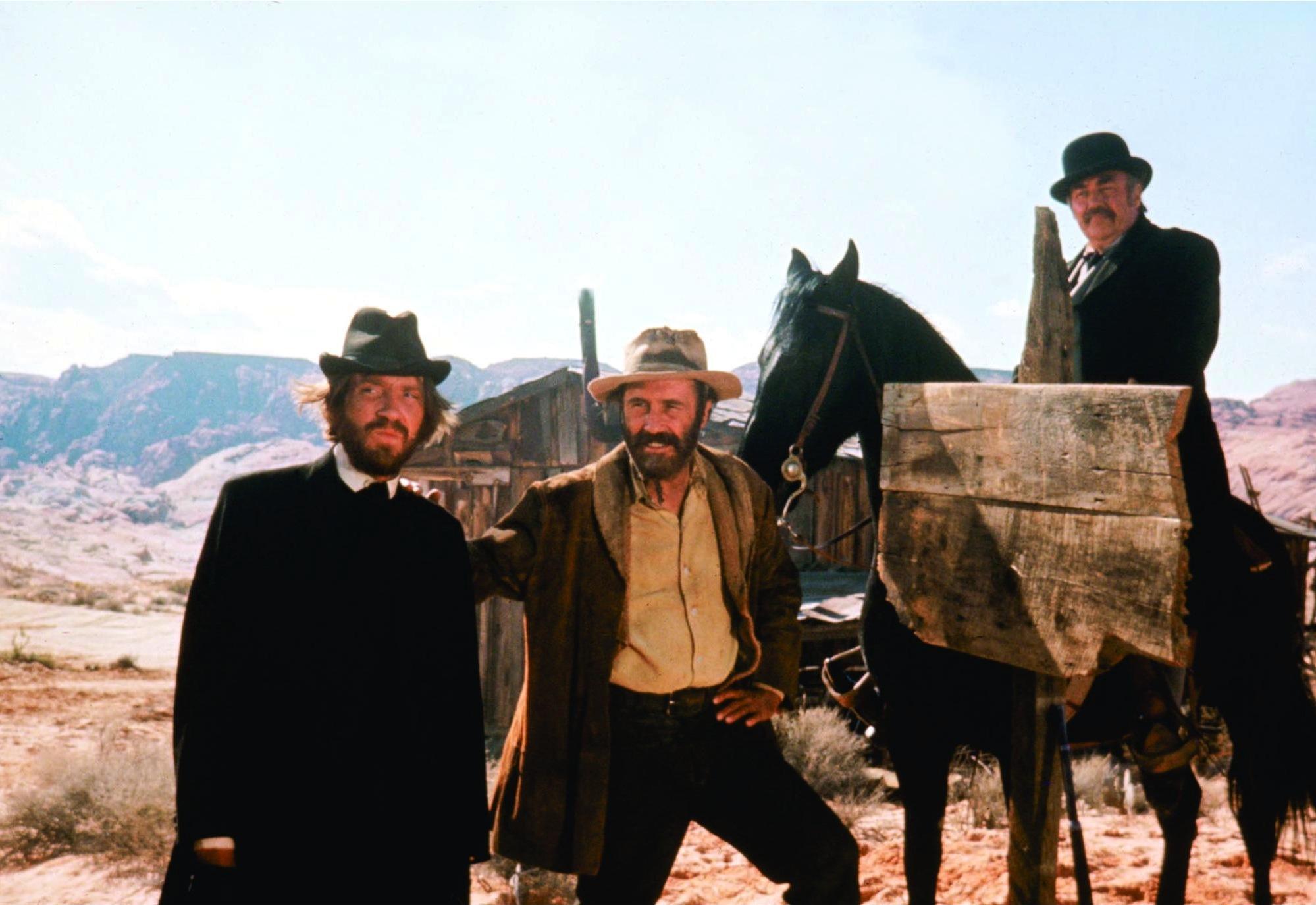
Hollywood director Sam Peckinpaugh’s chief identity to many viewers and film historians is as one of (if not THE) foremost purveyors of cinematic violence ever to create a film. Such films as his seminal 1969 breakthrough The Wild Bunch contained lovingly crafted ballets of blood-letting, meticulously choreographed in slow motion, mostly against a western setting.
After the big critical and box office hit of Wild Bunch, he next made cinematic headlines with a hyper violent modern tale, 1971’s ever controversial Straw Dogs. Sadly, in between those two odes to anarchy and mayhem came a film that was almost completely overlooked and still looks to be a minority work (along with the film maker debut, 1962’s Ride the High Country and the really atypical modern character western Junior Bonner from 1972) in many ways and was not at all what the public was expecting from the man who had just delivered The Wild Bunch.
The Ballad of Cable Hogue is set roughly in the same time span as The Wild Bunch, namely the tail end of the “wild west” era. The title character (Jason Robards, who had worked with Peckinpaugh on the much acclaimed TV production Noon Wine in 1966) is one of a trio of prospectors attempting to find something, anything, of value to mine in the western desert. His crafty partners, for reasons of their own, decide to desert him in the scorching dessert with no water and only clad in his underwear.
Nearing death and making a promise to God, Cable stumbles onto the region’s only water supply and enlists a self styled preacher (noted British actor David Warner) to help him build it into a business the near-by tiny town could sure use. In that town also lives Hildy (Stella Stevens), a prostitute with a soft spot for Cable and vice versa. The man’s attempts to prosper are successful to a degree but not without a number of rather comic mishaps (quite rare for Peckinpaugh) tempered with, yes, an amount of violence (though of a much more subdued and realistic variety than usual for the film maker).
The cast consists not only of the aforementioned actors, but such western stalwarts as Strother Martin, Slim Pickens, L. Q. Jones, R. G. Armstrong,Gene Evans, and Kathleen Freeman and they make an excellent ensemble (and one may catch that most of the supporting people are usually comic relief players in western and other films).
Stevens deserves special mention. Perhaps because she so resembled a living Barbie doll, she was almost always undervalued and rarely given deserving roles. However, when she was, as with this film and her famous encounter with Jerry Lewis in 1963’s The Nutty Professor, she proved that, shown the benefit of the doubt, she could come through just fine.
Perhaps, for one of the rare times in his filmography, having such a worthy leading lady (much like Mariette Hartley in High Country) inspired Peckinpaugh to put a bit of gentleness into his work and it pays off quite well, especially in a romantic montage sequence in the center of the film.
This film had a rough production thanks to natural factors such as bad weather and man made ones, such as bad behavior, and it went way over schedule and budget and got a very perfunctory release. This looks to have scotched Peckinpaugh’s chances to have directed the subsequent hits Jeremiah Johnson (1972) and Deliverance (also 1972, and a picture he was born to make).
Perhaps the elegiac tone which sometimes undercuts the comedy was too much of a stretch for the audiences of the time as well. Happily, cable of another kind, video and streaming have given this one another chance and the film finally seems to be earning some well deserved attention.
9. The Tenant (1976) – Roman Polanski
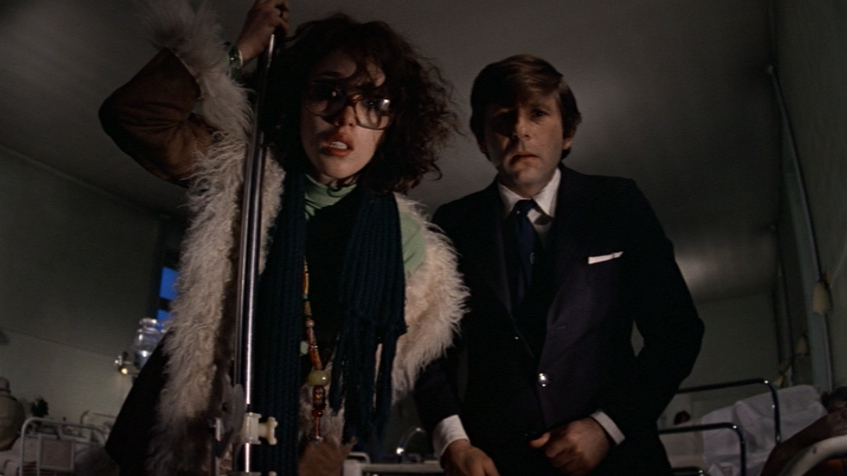
To say the Polish born international film maker Roman Polanski has lead one of the most….well, interesting, lives of any cinematic denizen is to make a serious and obvious understatement (and won’t be dwelled on further). Why should it be a surprise that his cinematic record should also be one of wild twists and turns.
For every much acclaimed film such as Repulsion (1965), there is a Cul-de-Sac or a Fearless Vampire Killers (1967) for every Rosemary’s Baby (1968). These non-big hits are usually reviled by critics and ignored by audiences until the day comes when its decided that they were masterpieces after all (and they all are, if nothing else, original and distinctive). The yen to the yang of 1974’s Chinatown (a major hit then, a great classic now) was Polanski’s next film (and, very probably, his last US film ever), The Tenant.
In its finished form, The Tenant could have been made by no one other than the guiding force behind Repulsion and Rosemary’s Baby. However, the project had originally been earmarked for British film maker Jack Clayton (surely keeping in mind his remarkable 1961 horror classic The Innocents).
Clayton was tied up in post-production for 1974’s The Great Gatsby (or so it was thought) and the front office gave the project to Polanski (and, in light of the film which was made, one wonders what the version the restrained Clayton would have looked like). The Polish wunderkind embraced it to the point that he not only re-wrote it and directed it, but made one of his infrequent acting appearances in the lead role.
That lead role is a quiet and unobtrusive little man who has just rented an apartment where an unfortunate occurrence has recently taken place, namely the female Egyptologist who previously rented the space threw herself out of the window in a suicide bid, though she lives on, badly damaged, in the hospital. The man is compelled to visit her, though he never previously met her, and encounters her good friend (the great French actress Isabelle Adjani), with whom he, understandably but foolishly, commences a relationship.
This is ill-advised enough but soon he realizes that he can never be quiet enough or unobtrusive enough for his rather bizarre and hostile neighbors (and moving into a building with neighbors such as Shelley Winters, Melvyn Douglas, Jo Van Fleet again, and famed French character actor Rufus should have told him something). Slowly he feels compelled to….well, become, the previous tenant with strange yet oddly preordained results.
Boy, did the critics hate this one at the time! Many thought that, even by Polanski’s standards, it was very weird. In their eyes, his own performance (and his is not at all a comforting presence) helped to distance the film from the viewer. However, though odd (and isn’t that Polanski’s place in the cinematic universe?), it’s made with as much nerve wracking skill as any of his films and his players, who know expertly how to be unusual and menacing, are just as expert as himself. It may well be that his lower key films aren’t the fodder for hit status but they, and this work is included, are worthy of respect.
10. Interiors (1978) – Woody Allen
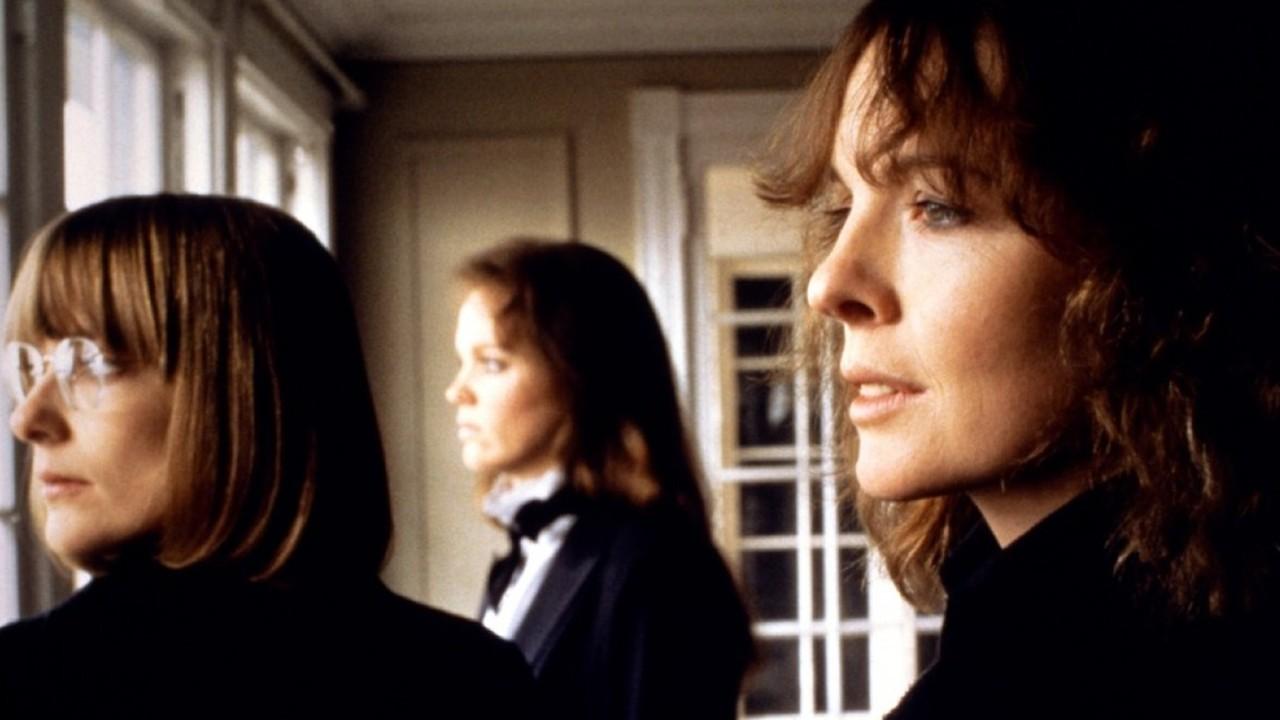
For those who chose not to be judgmental over things no one among the public can know for sure, the idea of Woody Allen creating a dramatic film is now not strange at all. During his going on six decade film career he has gone back and forth from drama to comedy with his films many times (though he himself never appears in one of his out and out dramas). However, back in 1978, after having made ten films (yes, the early, funny ones), he shocked very many by going dramatic. Was the result a hit or flop? Well, the answer was sort of yes and no whichever way it was examined.
Many, many times over the years Allen expressed his limitless admiration for Sweden’s great gift to the cinematic world, writer-director Ingmar Bergman. This is one of those odd times when a noted film creator admits admiration for another great who is nothing like themselves or anything like they could reasonably be (call it wishful thinking of a creative kind).
The big difference here is that Allen decided to make his devotion count for something (and actually didn’t at all stop that with this film, but that’s another extension of this story). Once the shock of Allen doing a dramatic film wore off, it wasn’t that much of a surprise that he would chose to imitate Bergman.
The plot of the subsequent film, Interiors, draws nothing from Allen’s early life in Jewish New York City lower middle class culture cum 1930 through 1960, as did so many of his comedic films. Instead, this one concerns one seriously WASPy family. Dad (EG. Marshall) is a “highly comfortable” stockbroker.
There are three daughters, an intellectual writer (early Allen muse Diane Keaton, excellent as both a dramatic and comedic actress), a pretty “movie star” (Kristin Griffith) as opposed to a real actress, and a real mess (Marybeth Hurt) who is continuously trying to find herself. (If they sound like three other sisters in a later and more noted Allen comedy-drama then so be it.)
However, the main figure in the family is the mother (the sublime stage and screen actress Geraldine Page, giving Allen his money’s worth and then some and sporting the tightest and ugly bun in film history).
The woman, named Eve, is an interior decorator (playing on the title) and, well, she is so cultured and tasteful that any color livelier than very pale green or, especially, beige is considered quite distasteful and vulgar to her nor is anything outside of the plainest and most austere of decors tolerated (and the fact that what is there is created only from natural materials goes without saying or regard to cost ,to which a tasteful person would never allude).
One could think Allen might have a comic field day with this but he’s dead, DEAD, serious. In view of that, its not surprising that dad, after a point, can’t take anymore and leaves, even in the face of his wife’s suicide attempt.
Even worse, he remarries just a short time later, to a natural, warm hearted woman (another stage great, Maureen Stapleton, showing up not a moment too soon) who does things such as (shudder) wear RED and does enjoyable things such as eating good food, drinking fine drink and loving non-PC things such as mink (well, times have changed a bit). Somehow, they all end up in the family beach house together. How can this end?
This is not something from Woody Allen’s heart, quite obviously. He seems to have both a love and hate for the uppity white bread family at the heart of the film (and its obvious that he, too, gets more of a kick from Stapleton’s character than any of the others in the film). However, it is from his head and his psyche. That doesn’t mean that his technique isn’t immaculate (if derivative).
The really big flaw here is that, drama being new to him, he seems intent on showing just HOW dramatic he can be and there is not a titter or giggle, let alone a laugh, in this film. (The audience is given fair warning early on with a scene encompassing a subjective view of Keaton’s character sitting next to an enormous box of tissues during her therapy session and using said tissue liberally as she discusses her family.)
All that said, the look of the film would do Bergan and his crew proud and the cast (also including Sam Waterston and Richard Jordan) is quite well chosen, though no one can top the two celebrated ladies from the theater. Interiors might not be to every taste nor a complete success but it is far from disastrous.